
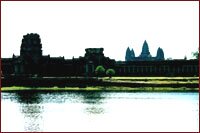 |
Cambodia like South Africa or China, is emerging from a period of history that it would be much like to leave behind. Although it has many problems to overcome, it is a country with interesting potential that is opening up to tourism and Western investment. |
The 17th century's tales about "a magnificent city hidden somewhere in the middle of the jungle" have become a reality for the joy of travellers, photographers and archaeologist amateurs alike. Apart from this architectural and historical masterpiece of Cambodian culture, Cambodia offers a kaleidoscope of beautiful landscapes, friendly people and amazing local handicrafts' shopping opportunities.
![]()
|
Bordered by Thailand, Laos and Vietnam, Cambodia covers a land area of 181,035 km2 with the Mekong running through and the Tonle Sap (Great Lake), as central to life as the Nile is to life in Egypt. There are three mountainous areas: the south-west and its so-called "Elephant" and "Cardamon" mountains, along the northern border with Thailand fringed by "Dangkrek" mountains and the north-east corner, the Eastern Highlands. An estimated 75% of the total land area surrounding Tonlé Sap is fertile lowland. Much of the country is forested with tropical vegetation dominating the south-west mountains and mangrove forest lining the coast. The ideal months to be in Cambodia are December and January, when humidity is bearable and it's unlikely to rain. The wet season (from April to October) is very wet, but can be a good time to visit Angkor, surrounding by the lush countryside. |
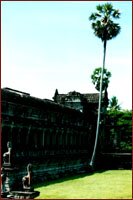 |
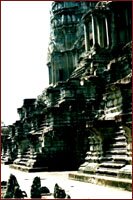 |
Cambodia's recent history has been one of appalling atrocities and sadness. The borders' conflict with Vietnam, the Pol Pot's Khmers Rouges taking power, a vicious civil war, all these successive nightmares begin only to end in 1989 with the collapse of Soviet Union. The reminders of those days are now firmly on the tourist's sightseeing, with the terrifying Tuol Sleng Genocide Museum, Choeung Ek and the Killing Fields. However, Cambodia is above all a great former Empire, whom people created such magnificence as the stupendous Angkor temples' complex. The Angkor period (9th-13th centuries) concentrated the greatest and best of Cambodia's art and architecture, strongly influenced by Indian culture. This period is also one of the Khmer domination over all the South-East Asia peninsula. The scale and the beauty of Angkor temples show this glorious past for the joy of travelers. |
![]()
|
The population of Cambodia topped more than 10 millions in 1996. The Khmers are the dominant group but there are significant Chinese and Vietnamese minorities as well as a small percentage of tribals groups. |
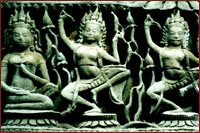 |
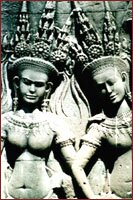 |
There is a strong tradition of dance in Cambodia, which has its origins in the sacred dances of the Apsaras, the mythological seductresses of ancient Cambodia. Because of the importance of dance to the royal ancient Khmer court, music was and remains also central to Cambodian culture and religious life.
|
Cambodia is an amazing country full of colours and discovery. With Angkor temples'complex, bearing witness to a golden age of the Khmer culture, it is definitely a destination for the 21st century.The Victoria Hotels & Resorts, an international-standard chain with hotels located in the most unique and beautiful scenery, has thought to offer you the combination of adventure and luxury in order to make your journey a most memorable one& so get ready to experience& Adventure in style!